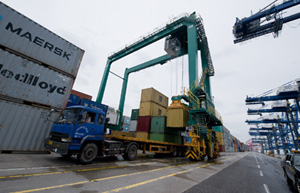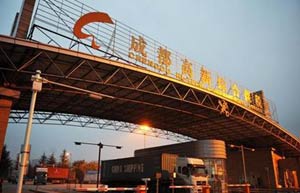The World Trade Organization expects global commerce to grow by only 3.1 percent in 2014, down from the 4.7 percent forecast made in April, as import demand in China and other resource-rich regions weakens.
The statement released on Tuesday also cut the 2015 trade forecast from 5.3 percent to 4 percent, significantly below the 5.2 percent growth average for the past 20 years.
The organization said weaker-than-expected GDP growth and muted import demand in the first half of the year were responsible for the downgrade and warned of further risks in the second half arising from uneven global growth, worsening regional conflicts in Ukraine and the Middle East, and increasing panic from the Ebola crisis.
Roberto Azevedo, director-general of the WTO, said: "International institutions have significantly revised their GDP forecasts after disappointing economic growth in the first half of the year.
 |
|
 |
"Cutting trade costs and broadening trade opportunities can be key ingredients in reversing this trend."
The WTO previously forecast the return of stronger trade in 2014 after a two-year slump that saw world trade grow by only 2.2 percent on average during 2012-13.
But global trade stagnated in the first half of 2014 as the gradual recovery of import demand in developed countries was offset by declines in developing countries, the statement said.
In August, China's year-on-year imports fell for the second consecutive month, dropping by 2.4 percent to $158.63 billion. Total imports rose by only 0.6 percent in the first eight months from a year earlier to $1.28 trillion.
Shen Danyang, spokesman for the Ministry of Commerce, said last week that sluggish import figures were due to depressed international commodity prices, the restructuring of the Chinese economy and weakening imports.
China's exports performed better, growing by 3.8 percent in the first eight months from a year earlier to $1.48 trillion. This resulted in total trade growth of 2.3 percent but was still far off the 7.5 percent annual trade growth target.
According to Shen, the ministry continues to implement measures that were set out in May to boost trade. The measures include encouraging imports of high-tech components and scarce resources, and speeding up the cultivation of new trade zones, he said.
"However, in the coming four months, we will not put forward many new measures or policies," the spokesman said.
The WTO also predicted a drop in imports of 0.7 percent in South and Central America, and a decline in exports of 0.1 percent in Africa, the Commonwealth of Independent States and the Middle East this year, with those regions suffering from civil conflict, weak non-fuel commodity prices and easing of growth in Asian export markets.
